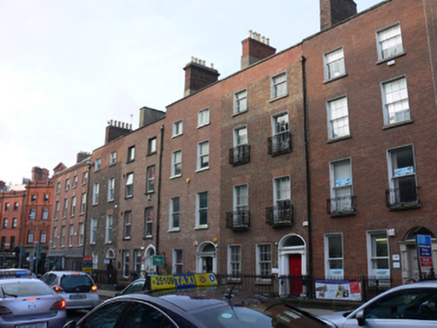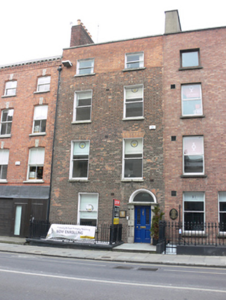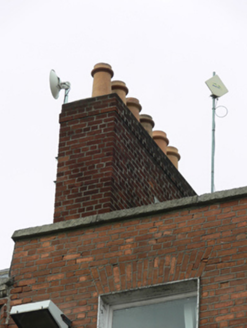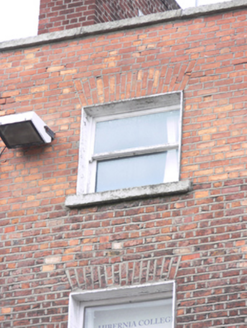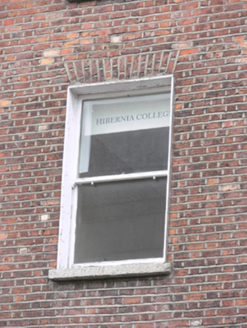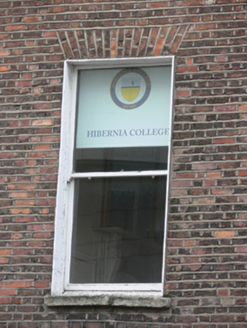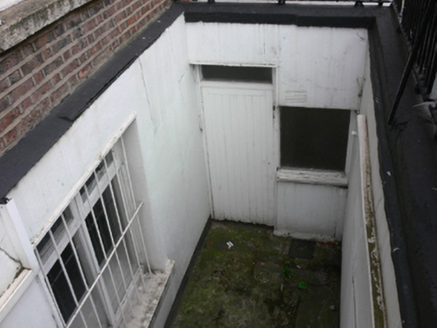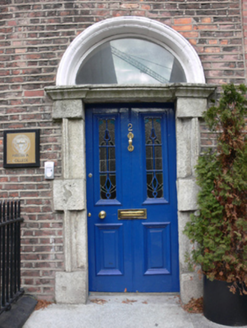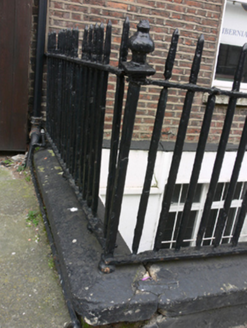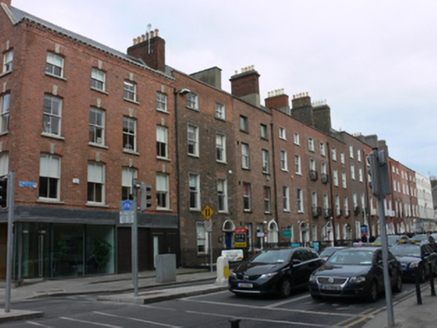Survey Data
Reg No
50020515
Rating
Regional
Categories of Special Interest
Architectural, Artistic
Original Use
House
In Use As
Building misc
Date
1760 - 1780
Coordinates
316471, 233792
Date Recorded
05/03/2015
Date Updated
--/--/--
Description
Terraced two-bay four-storey over basement former house, built c.1770, having recent extension to rear (north-east) elevation. Now in educational use. M-profile pitched slate roof concealed behind rebuilt red brick parapet with granite coping, red brick and rendered chimneystacks having clay pots. Red brick, laid in Flemish bond, to walls, rebuilt to upper floor, smooth render to walls to basement. Square-headed window openings with granite sills, raised render reveals and one-over-one pane timber sliding sash windows, timber casement window and steel bars to basement window opening. Round-headed door opening with moulded masonry surround, carved granite block-and-start jambs, cornice, single pane fanlight and half-glazed timber panelled door with brass door furniture, recent step to front. Wrought-iron railings with cast-iron urn finials to corner posts on painted masonry plinth wall, enclosing basement area. Set back from the road on Clare Street.
Appraisal
Clare Street was laid out in 1762 to plans by John Ensor for the sixth Viscount Fitzwilliam. This well executed Georgian terraced town house retains its original internal plan form. The handsome Gibbsian granite doorcase may possibly be reclaimed from elsewhere. Cast-iron is used to good effect to enliven this façade, notably the railings, adding technical as well as decorative interest. By the mid-nineteenth century many of the buildings in this area had been converted for commercial uses, but this remained in use as a private house, occupied by a Mrs Margaret Turkington.
